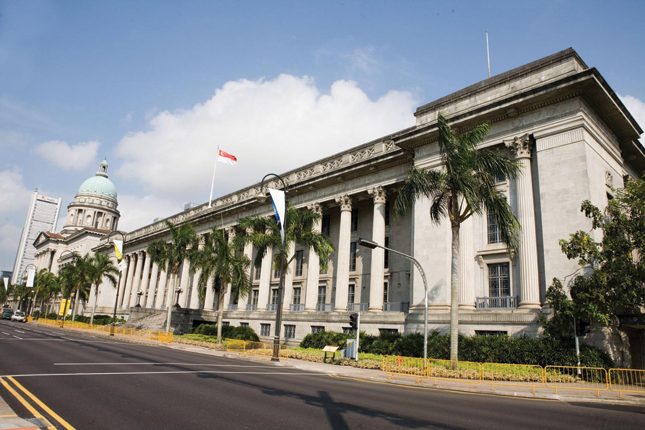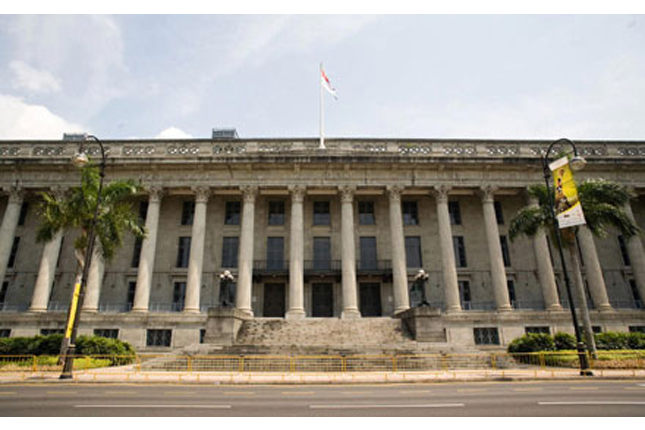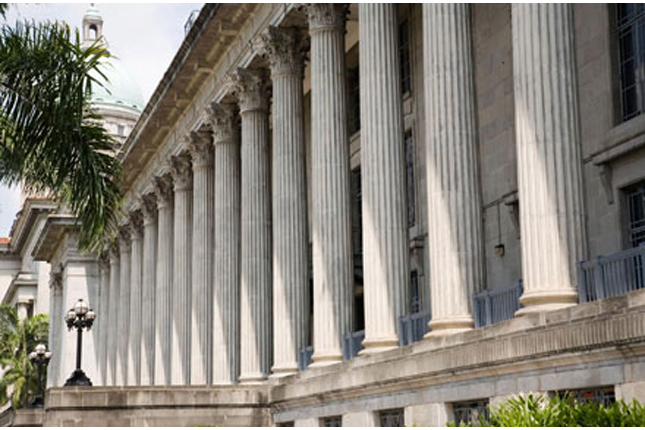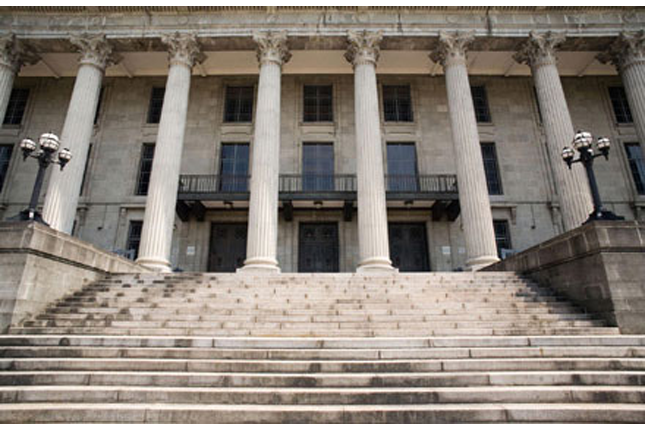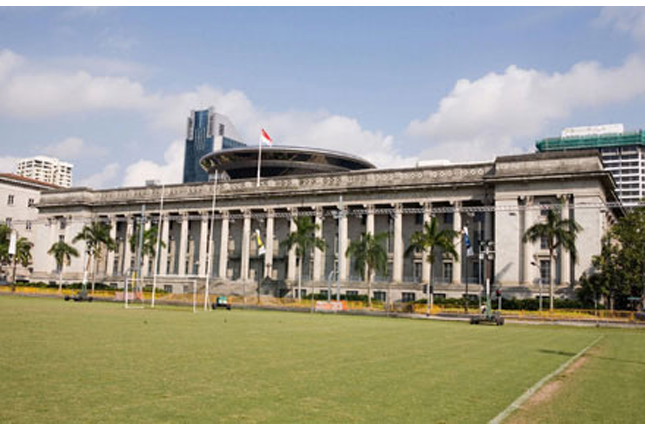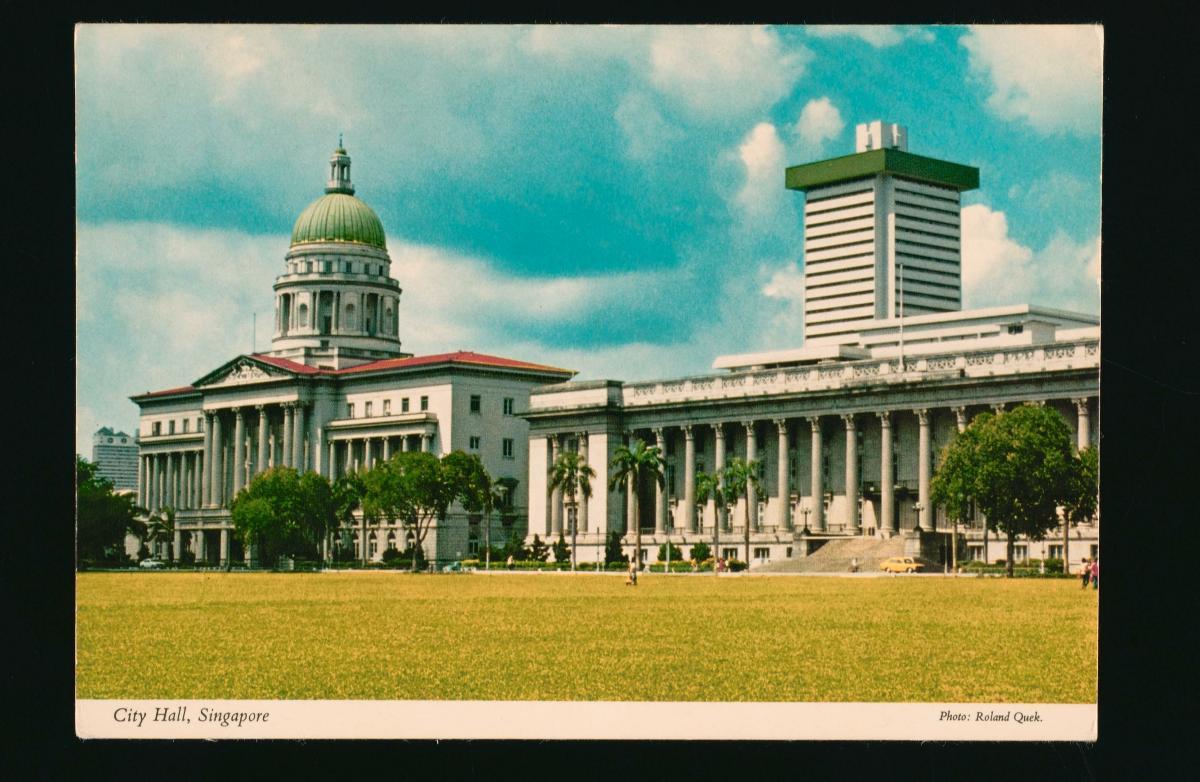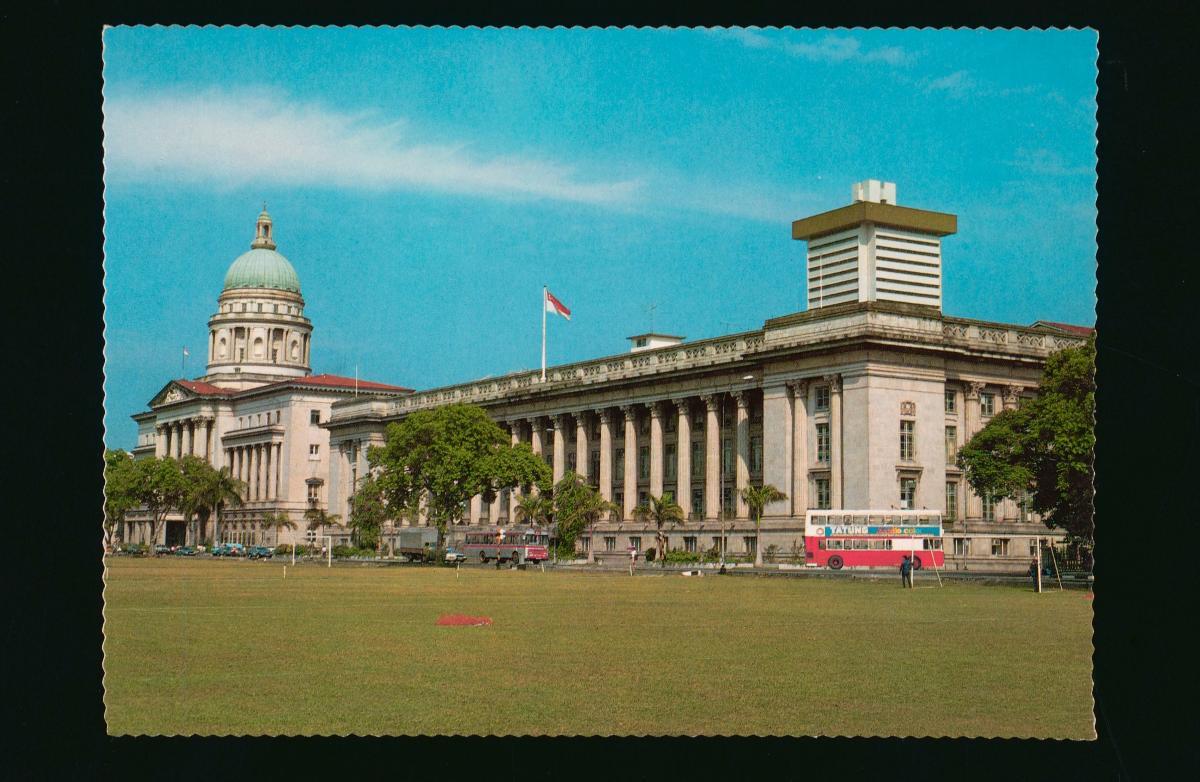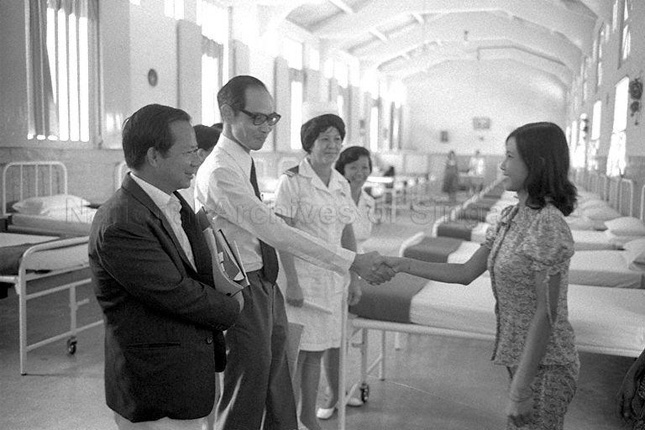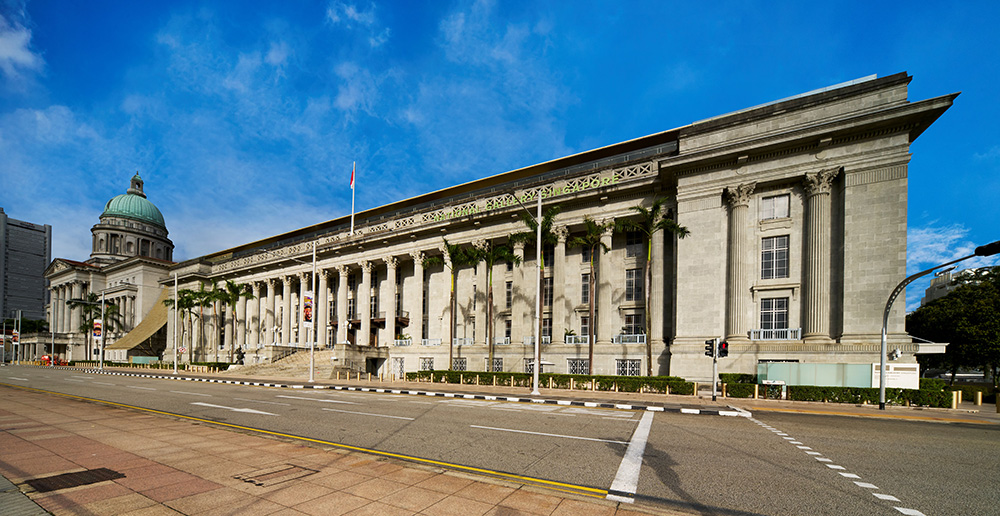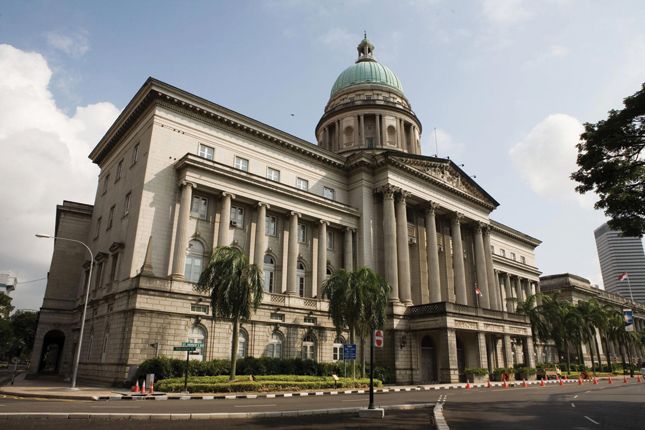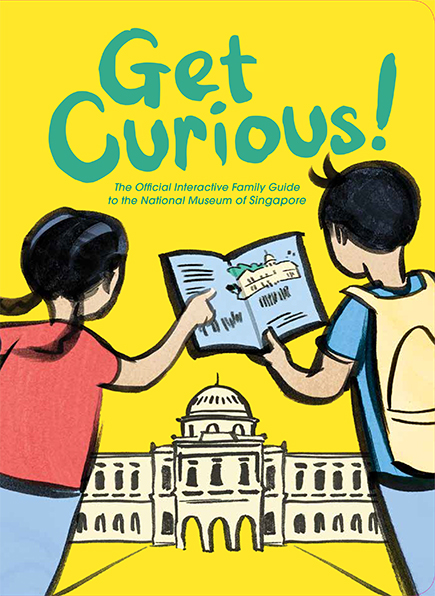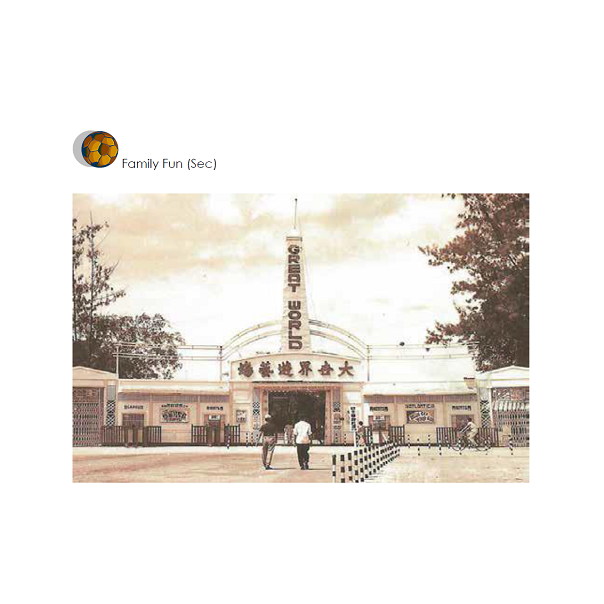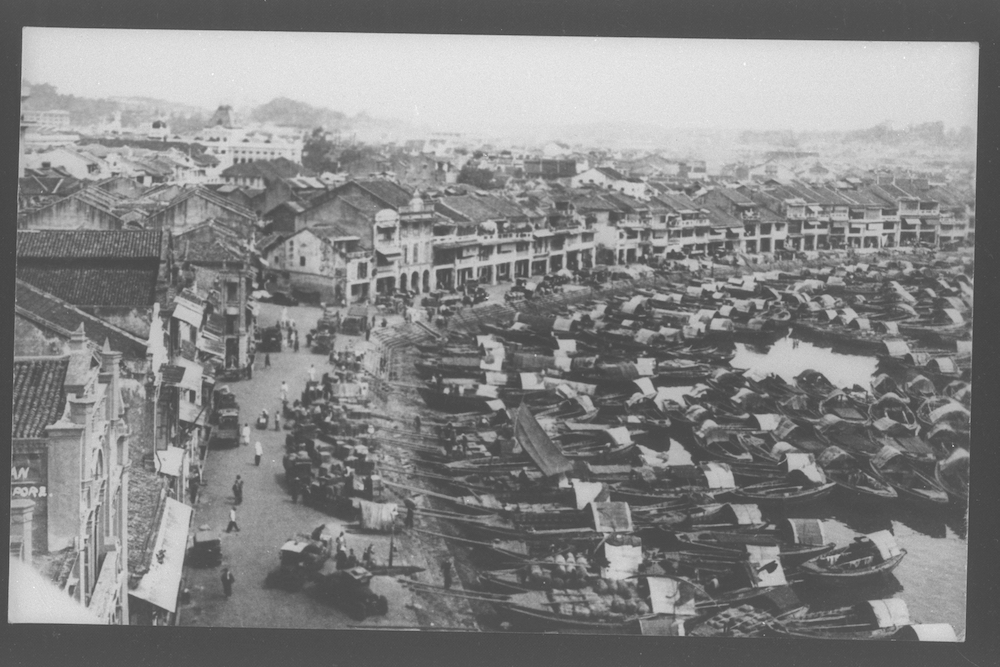Located in the heart of the Civic District, the Former City Hall served as an important government office in Singapore. The impressive building bears witness to Singapore’s colonial past and the Japanese Occupation (1942–1945), as well as to several milestones on its road to independence.
Municipal Building
Completed in 1929, the edifice was built to house the Municipal Council and was originally known as the Municipal Building. The Municipal Council was formally established in 1856 to oversee the maintenance of public infrastructure and the provision of water, electricity, and gas in Singapore. Initially, it operated from rooms in the Town Hall before moving to other locations in the town area, and eventually into the Municipal Building upon its completion.
Prior to land reclamations in the twentieth century, the Municipal Building was part of Singapore’s seafront Neoclassical façade. Vessels approaching the harbour or sailing past would be greeted by the sight of the impressive colonial buildings that effectively exhibited the prowess and might of the British Empire.
Second World War
When the Japanese began to launch their attacks on Singapore, the Municipal Building was open to the public who sought shelter from the air raids. The building became the municipal headquarters of the occupying forces after the fall of Singapore to the Japanese on 15 February 1942. At the start of the Japanese Occupation, the Japanese gathered Allied prisoners-of-war in front of the Municipal Building and marched them to the infamous camp in Changi.
It was also in this building that Supreme Commander of the Southeast Asian Command Admiral Lord Louis Mountbatten accepted the surrender from General Seishiro Itagaki on 12 September 1945. On the same day, a huge victory parade took place on the Padang in front of the Municipal Building and the Supreme Court to celebrate the end of the Japanese Occupation in Singapore.
A funeral service was conducted for Singapore’s war hero, Lim Bo Seng (林谋盛), outside the Municipal Building on 13 January 1946. His mortal remains were then interred near MacRitchie Reservoir, and a memorial was erected in his honour.
Road to Independence
The building was duly renamed City Hall when King George VI granted city status to Singapore in 1951. After the landslide victory of the People’s Action Party in the 1959 Legislative Assembly General Elections, Lee Kuan Yew was sworn into political office as Singapore’s first Prime Minister with his eight cabinet ministers in the City Hall and formally declared Singapore’s full internal self-governance on the building’s steps. On 3 December 1959, large crowds congregated outside the City Hall to witness the installation of Yusof bin Ishak as Singapore’s first Malayan-born Yang di-Pertuan Negara (‘Head of State’ in Malay). They were also introduced for the first time to the state anthem, Majulah Singapura, state crest, and state flag.
On 16 September 1963, Lee read the Proclamation of Malaysia from the steps of the City Hall, announcing the end of colonial rule and the formation of the Federation of Malaysia with Singapore as a member state. The City Council was abolished that same year; its function to oversee electricity, water, and gas supplies was transferred to the newly formed Public Utilities Board. After Singapore gained independence on 9 August 1965, the edifice housed various government offices, such as the Prime Minister’s Office, Ministry of Foreign Affairs, Ministry of Culture, and offices of the Judiciary. It also remained the venue for swearing-in ceremonies of high government office holders.
Architecture and Furnishings
The Former City Hall stands imposingly in front of the Padang, the large open field in Singapore’s civic centre that Sir Stamford Raffles ordered to be included in the Town Plan. When designing the building, Municipal Architects F. D. Meadows and Alexander Gordon cleverly exploited its prestigious location by creating a front that is both stately and colossal.
The edifice was erected on a solid plinth and has a grand stairway leading to its main entrance. It has a flat roof. Undoubtedly, the most outstanding feature of the edifice is the luxurious row of Corinthian columns of gigantic proportions. Cavaliere Rudolfo Nolli, an Italian architect and a sculptor who was based in Singapore, was commissioned to supply the columns and granolithic stone cladding. Later, he was also appointed to decorate the Former City Hall’s neighbour, the Former Supreme Court.
Touted as a forerunner of the post-war International Style, the Former City Hall combines both Neoclassical and Modernist architectural elements in its design. Behind its symmetrical faux stone façade, colonnade, and entablature is actually a steel structure. The windows and interior are stripped of the usual treatments and decorations befitting of Neoclassical architecture, and adopt instead a simpler design that is characteristic of Modernist buildings.
Former City Hall Today
The Former City Hall and the Former Supreme Court reopened in end-2015 as National Gallery Singapore. This visual arts institution oversees the largest public collection of modern art in Singapore and Southeast Asia.
Our National Monuments
Our National Monuments are an integral part of Singapore’s built heritage, which the National Heritage Board (NHB) preserves and promotes for posterity. They are monuments and sites that are accorded the highest level of protection in Singapore.




